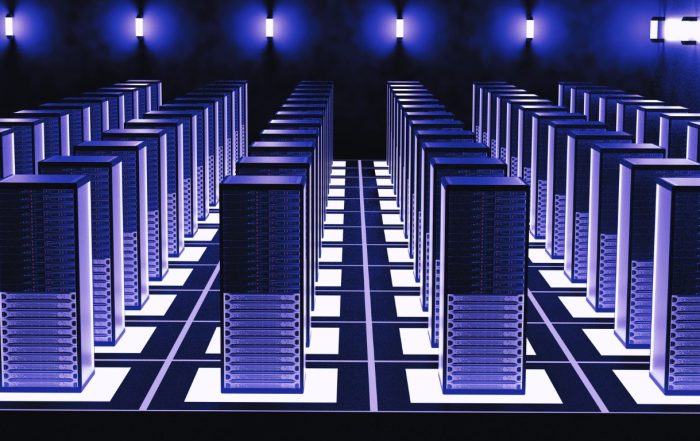
How Edge Compute Is Revolutionizing Cost Optimization in Video Streaming
Key Takeaways
- Edge computing revolutionizes video streaming by processing data at the network’s periphery, significantly reducing the data travel distance and optimizing resource usage.
- Through edge computing, latency issues are mitigated, resulting in faster load times and an enhanced user experience.
- By transmitting only necessary data, edge computing optimizes bandwidth usage, reducing the overall data sent to and from centralized servers.
- Edge servers integrated into CDN infrastructure enhance content delivery capabilities, making near-instantaneous video streaming possible.
In the fast-paced world of video streaming, delivering high-quality content quickly and efficiently is paramount. As user expectations continue to rise, providers are constantly seeking innovative solutions to enhance Quality of Experience (QoE) and optimize costs. Enter Edge Computing—a game-changing technology that’s revolutionizing the industry. By processing data closer to end-users, edge computing significantly reduces latency, boosts load times, and optimizes bandwidth usage. Let’s delve deeper into this transformative technology and its role in video streaming.
Understanding the Role of Edge Compute in Video Streaming
Edge computing brings data processing closer to the end-user by leveraging a distributed network of servers around the world. This strategic positioning significantly reduces the distance data must travel, resulting in faster load times and improved user experience. Here, every millisecond matters—higher latency can lead to buffering and lower video quality, which can quickly turn viewers away.
Furthermore, edge computing optimizes bandwidth usage by intelligently transmitting only the necessary data over the network. This approach reduces the amount of data that needs to be sent to and from centralized servers, mitigating network congestion, especially during peak usage times. The result? Higher streaming quality, even in regions with limited internet infrastructure.
But the benefits of edge computing don’t stop at improved load times and bandwidth optimization. By integrating edge servers into Content Delivery Network (CDN) infrastructure, content delivery capabilities are significantly enhanced. This integration makes near-instantaneous video streaming possible—a critical factor in today’s demand for real-time content.
Moreover, edge computing enables more efficient resource utilization. Instead of relying on a single centralized location, processing tasks are distributed across multiple servers. This distribution allows for load balancing, avoiding server overload during peak times, and ensuring a consistent, high-quality streaming experience.
As the video streaming landscape continues to evolve, understanding and harnessing the power of edge computing will be key to staying competitive. By reducing latency, optimizing bandwidth usage, and enhancing content delivery, edge computing is set to become an integral part of the video streaming ecosystem.
Analyzing the Cost Benefits of Edge Compute vs. Cloud Processing
When it comes to optimizing costs in video streaming, the advantages of edge computing become even more pronounced. The crux of cost optimization lies in efficient resource utilization and reduction of operational expenses—both of which are key strengths of edge computing.
Reduced Operational Costs
Edge computing reduces operational costs by minimizing the distance and latency between user devices and data centers. This leads to lower bandwidth requirements and reduced data transfer expenses. Edge servers can significantly cut operational expenses—a key advantage for businesses looking to optimize their CDN investments.
Less Reliance on Expensive Cloud Resources
By processing data at the edge, organizations can reduce their reliance on expensive cloud computing resources. This is because less data needs to be sent to and processed in centralized cloud servers. It’s a simple equation—less data sent and processed equals lower costs.
Granular Control Over Resource Allocation
Another cost benefit of edge computing is the granular control it offers over resource allocation. It enables businesses to scale their infrastructure based on specific requirements and avoid overprovisioning, which is often costly. With edge computing, you only pay for what you need—nothing more, nothing less.
Improved Fault Tolerance and Reduced Downtime
Distributing processing tasks across multiple edge servers can also lead to improved fault tolerance and reduced downtime. This minimizes the potential financial impact of service disruptions. After all, in the highly competitive video streaming industry, every second of downtime can equate to lost revenue.
Lower Bandwidth Costs
Finally, edge computing can help lower bandwidth costs—a significant expense for video streaming providers. Edge computing optimizes bandwidth by reducing the amount of data transmitted over the network and optimizing content delivery for maximum efficiency.
As you can see, the cost benefits of edge computing compared to cloud processing are substantial, making it an excellent choice for cost optimization in video streaming. As the demand for seamless video streaming continues to grow, so does the need for efficient, cost-effective solutions—making edge computing an essential tool in the video streaming toolkit.
Examining the Impact of Edge Compute on Quality of Experience (QoE)
Quality of Experience (QoE) is a critical factor in the video streaming industry. It’s the perceived quality of a service from the viewer’s perspective. And when it comes to enhancing QoE, edge computing shines bright.
Significant Reduction in Latency
Edge computing significantly reduces latency by processing data closer to the end-user. This results in faster video start times and smoother playback experiences. It’s like bringing the cinema right into your living room—without the annoying buffering or lag.
Distributing Content Efficiently
By distributing content across a network of edge servers, viewers can access video content from the server closest to their location. This minimizes buffering and improves overall QoE. So, no matter where you are in the world, you can enjoy your favorite video content without any hiccups.
Enabling Adaptive Bitrate Streaming
Edge computing enables adaptive bitrate streaming. This allows video quality to dynamically adjust based on the viewer’s network conditions and device capabilities, ensuring an optimal viewing experience. It’s like having a personal video technician who constantly adjusts the video quality based on your specific needs.
Real-time Personalized Content and Advertising
With edge compute, video streaming providers can offer personalized content recommendations and targeted advertising in real-time. This enhances viewer engagement and satisfaction. It’s like having a video streaming service that knows you better than you know yourself.
Efficient Handling of Network Congestion
Edge computing allows for more efficient handling of network congestion and traffic spikes. This ensures a consistent QoE even during peak viewing periods. So, whether it’s the latest episode of your favorite show or a live sports event, you can enjoy a seamless streaming experience.
As you can see, edge computing is revolutionizing video streaming by offering superior QoE. It’s the secret sauce that makes your favorite video streaming service work flawlessly—anytime, anywhere.
Overcoming Challenges in Implementing Edge Compute at Scale
Implementing edge compute at scale comes with its unique set of challenges. However, overcoming these hurdles paves the way for enhancing cost optimization in video streaming with edge compute. Let’s explore these challenges and how to mitigate them.
Deploying and Managing Distributed Edge Servers
Deploying and managing a distributed network of edge servers can be complex. It requires careful planning and coordination to ensure optimal performance and reliability. This is akin to setting up a series of relay stations in a marathon, where each station needs to function seamlessly to ensure the runner—your data—reaches the finish line efficiently.
Ensuring Data Security and Privacy
When processing sensitive information at the edge, robust security measures and compliance with relevant regulations become crucial. This is not just a technical challenge, but also a legal one. Just like a bank needs to safeguard its vaults, you need to protect your data at the edge.
Integrating Edge Computing with Existing Infrastructure
Edge computing needs to be integrated with existing CDN infrastructure and video streaming platforms, which may require significant development efforts and API integrations. It’s like adding a new piece to an already intricate puzzle—it needs to fit perfectly to maintain the overall picture.
Scaling Edge Compute Resources
Meeting fluctuating demand by scaling edge compute resources can be challenging. It requires advanced load balancing and auto-scaling mechanisms to maintain performance and cost-efficiency. Imagine juggling multiple balls in the air—you need to keep all of them in motion without dropping any.
Maintaining Consistent Performance
As edge computing relies on a distributed network of servers, ensuring consistent performance and troubleshooting issues across multiple locations can be more complex compared to centralized cloud-based solutions. It’s like maintaining a fleet of cars scattered across a city—each car needs to operate smoothly for the entire fleet to function efficiently.
In conclusion, while implementing edge compute at scale presents challenges, they are not insurmountable. With careful planning, robust security measures, and efficient resource management, you can leverage edge compute to revolutionize cost optimization in video streaming. So, are you ready to embrace edge compute and stay ahead of the curve?
About CacheFly
Beat your competition with faster content delivery, anywhere in the world! CacheFly provides reliable CDN solutions, fully tailored to your business.
Want to talk further about our services? We promise, we’re human. Reach us here.
Product Updates
Explore our latest updates and enhancements for an unmatched CDN experience.
Book a Demo
Discover the CacheFly difference in a brief discussion, getting answers quickly, while also reviewing customization needs and special service requests.
Free Developer Account
Unlock CacheFly’s unparalleled performance, security, and scalability by signing up for a free all-access developer account today.
CacheFly in the News
Learn About
Work at CacheFly
We’re positioned to scale and want to work with people who are excited about making the internet run faster and reach farther. Ready for your next big adventure?




